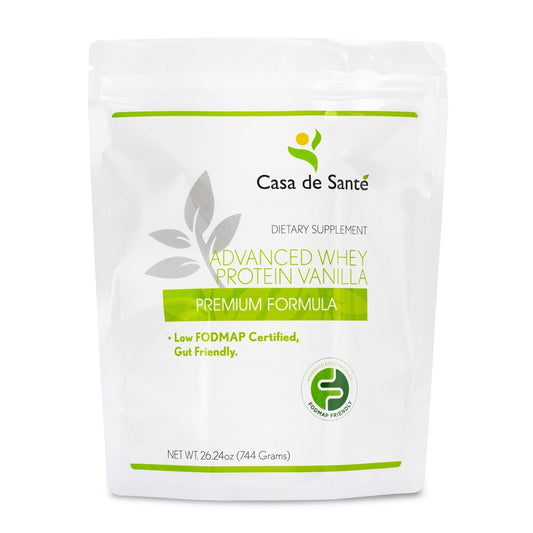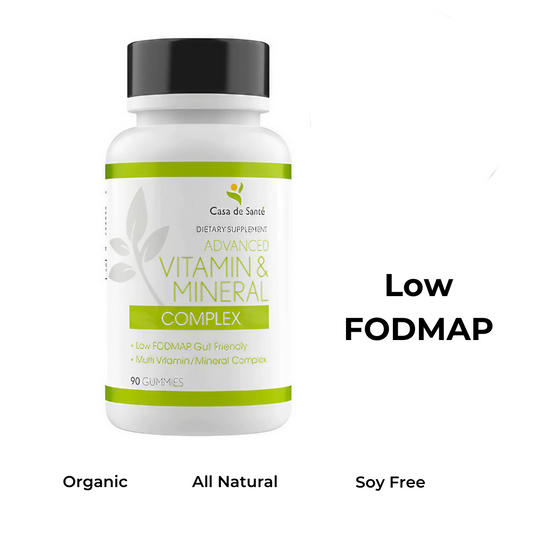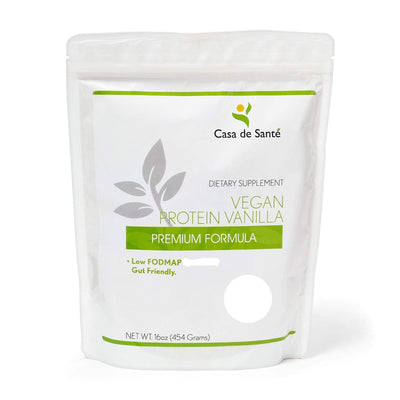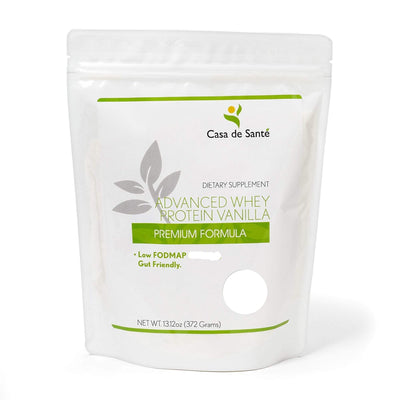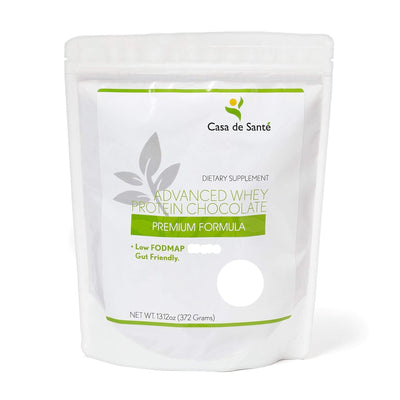The Ultimate Guide to Oligosaccharides: Nature's Versatile Sweetener
The Ultimate Guide to Oligosaccharides: Nature's Versatile Sweetener
In the ever-evolving landscape of natural sweeteners and functional food ingredients, oligosaccharides have emerged as a fascinating component that bridges the gap between sweetness and wellness. These complex carbohydrates are revolutionizing how we think about sweeteners, offering benefits that extend far beyond simply satisfying our sweet tooth. Whether you're a health enthusiast, food scientist, or simply curious about alternatives to traditional sugar, this comprehensive guide will walk you through everything you need to know about oligosaccharides – from their chemical structure to their practical applications in your kitchen and beyond.
What Are Oligosaccharides?
Oligosaccharides represent a class of carbohydrates that occupy the middle ground between simple sugars and complex starches. The term "oligo" comes from Greek, meaning "few," which perfectly describes their molecular structure – they consist of short chains of sugar molecules (typically 3-10 units) linked together. This unique structure gives them properties that differ significantly from both simple sugars like glucose and fructose, and more complex carbohydrates like starch and cellulose.
Found naturally in many plants, oligosaccharides occur in foods like chicory root, Jerusalem artichokes, onions, garlic, legumes, and human breast milk. Their presence in such a diverse range of natural sources hints at their biological importance – something food scientists and nutritionists have been increasingly exploring in recent decades.
The Chemistry Behind Oligosaccharides
At their core, oligosaccharides are formed when monosaccharides (simple sugars) join together through glycosidic bonds. Depending on the specific sugar units involved and how they're linked, different types of oligosaccharides emerge – each with distinct properties and functions. Common varieties include fructooligosaccharides (FOS), galactooligosaccharides (GOS), and xylooligosaccharides (XOS).
What makes oligosaccharides particularly interesting is their resistance to digestion in the upper gastrointestinal tract. Unlike table sugar, which is rapidly broken down and absorbed, many oligosaccharides pass through the stomach and small intestine relatively intact. This resistance to digestion is key to many of their health benefits, as we'll explore later.
Types of Oligosaccharides
The oligosaccharide family is diverse, with each member bringing something unique to the table. Fructooligosaccharides (FOS), derived from sources like chicory root and Jerusalem artichoke, have a mildly sweet profile and are widely used as prebiotic fibers. Galactooligosaccharides (GOS), naturally present in human milk and commercially produced from lactose, play a crucial role in infant gut development and are increasingly added to formula milk. Xylooligosaccharides (XOS), derived from xylan-rich plant materials, have shown promising prebiotic effects even at low doses.
Other notable members include isomalto-oligosaccharides (IMO), which occur naturally in some fermented foods, and mannan-oligosaccharides (MOS), which have found applications in animal nutrition for their ability to bind to certain pathogenic bacteria. Each type has carved out its niche in the food, health, and even animal feed industries.
Health Benefits of Oligosaccharides
The rising popularity of oligosaccharides isn't merely a food trend – it's backed by a growing body of scientific research highlighting their numerous health benefits. As we better understand the gut microbiome's role in overall health, oligosaccharides have taken center stage as powerful prebiotics that can positively influence our well-being in multiple ways.
Prebiotic Powerhouses
Perhaps the most celebrated aspect of oligosaccharides is their prebiotic function. Unlike probiotics, which are live beneficial bacteria, prebiotics serve as food for these beneficial microorganisms already residing in our gut. When oligosaccharides reach the colon undigested, they're fermented by beneficial bacteria like Bifidobacteria and Lactobacilli, promoting their growth and activity while crowding out potentially harmful bacteria.
This selective stimulation of beneficial gut bacteria leads to the production of short-chain fatty acids (SCFAs) such as butyrate, acetate, and propionate. These compounds nourish colon cells, reduce inflammation, and may even play a role in regulating appetite and metabolism. The prebiotic effect of oligosaccharides has been linked to improved digestive health, enhanced immune function, and potentially reduced risk of certain gastrointestinal disorders.
Digestive Health and Beyond
Regular consumption of oligosaccharides has been associated with improved bowel regularity and stool consistency – benefits that make them valuable for both preventing constipation and managing certain types of diarrhea. Their fermentation in the colon creates a slightly acidic environment that inhibits the growth of pathogenic bacteria while promoting beneficial ones.
Beyond digestive health, emerging research suggests oligosaccharides may influence immune function, mineral absorption, and even mental health through the gut-brain axis. Studies have shown promising results regarding calcium absorption enhancement, potentially contributing to bone health. Additionally, the metabolites produced when gut bacteria ferment oligosaccharides may help regulate blood glucose levels and lipid metabolism, offering potential benefits for metabolic health.
Weight Management and Blood Sugar Control
As partial sugar replacers with fewer calories than traditional sweeteners, oligosaccharides can contribute to reduced caloric intake while maintaining palatability. Their slower digestion and absorption also means they have a lower impact on blood glucose levels compared to simple sugars, resulting in a lower glycemic index.
Furthermore, the SCFAs produced during oligosaccharide fermentation may influence appetite regulation and fat metabolism. Some research suggests these compounds can trigger the release of hormones that promote satiety and regulate energy intake. While not a magic bullet for weight loss, oligosaccharides can be a valuable component of a balanced approach to weight management and metabolic health.
Oligosaccharides in Food and Beverage Applications
The food industry has embraced oligosaccharides for their dual functionality – they not only add sweetness but also bring nutritional benefits to formulations. Their unique properties make them versatile ingredients that can improve both the sensory and nutritional profiles of various products.
Natural Sweetening with Added Benefits
With approximately 30-60% the sweetness of sucrose depending on the specific type, oligosaccharides offer a milder sweet profile that many describe as clean and pleasant. This moderate sweetness makes them excellent for reducing sugar content without relying entirely on high-intensity sweeteners that might impart aftertastes. Food manufacturers often use them in combination with other sweeteners to create balanced flavor profiles while reducing overall sugar content.
Beyond sweetness, oligosaccharides contribute functional properties that can improve food texture and mouthfeel. They can enhance viscosity, provide body, and in some applications, help retain moisture – properties particularly valuable in reduced-sugar baked goods, dairy products, and confectionery. Their stability during food processing, including heat treatment and acidic conditions, further adds to their appeal in commercial food production.
Commercial Products Featuring Oligosaccharides
Walk through any health food store or even mainstream supermarkets today, and you'll find numerous products highlighting oligosaccharides among their ingredients. Prebiotic fiber supplements often contain FOS or GOS as their active components. Infant formulas increasingly include GOS to mimic the oligosaccharides naturally present in breast milk. Energy bars, breakfast cereals, yogurts, and even beverages now feature oligosaccharides for their prebiotic benefits and sugar-reducing potential.
Some brands have gone further, developing specialty products where oligosaccharides are the star ingredient. Prebiotic syrups based on FOS from chicory root, for instance, are marketed as healthier alternatives to traditional sweeteners for home use. These products allow consumers to add both sweetness and prebiotic benefits to their homemade foods and beverages.
Cooking and Baking with Oligosaccharides
For home cooks and baking enthusiasts looking to experiment with healthier sweetener options, oligosaccharides offer exciting possibilities. While not yet as common in home kitchens as honey or maple syrup, oligosaccharide-based sweeteners are becoming increasingly available to consumers.
Practical Tips for Home Use
When substituting oligosaccharides for traditional sugar in recipes, keep in mind their lower sweetness intensity. As a general rule, you might need to adjust other flavors to compensate for the milder sweetness or combine them with small amounts of other sweeteners. Their moisture-retaining properties can be advantageous in baked goods, potentially yielding softer textures and extended freshness.
For beverages, oligosaccharide syrups dissolve well in both hot and cold liquids, making them suitable for sweetening coffee, tea, smoothies, and homemade sodas. In raw applications like dressings and sauces, they can add mild sweetness without overwhelming other flavors. When using pure oligosaccharide powders, be aware that they may have different dissolution rates compared to granulated sugar.
Recipe Ideas and Inspiration
Breakfast foods offer excellent opportunities to incorporate oligosaccharides. Try drizzling FOS syrup over oatmeal or yogurt, or incorporate oligosaccharide powder into homemade granola mixtures before baking. For baked goods, cookies and muffins made with part oligosaccharide sweeteners not only reduce sugar content but may also have improved texture and shelf-life.
Homemade energy balls combining nuts, seeds, dried fruits, and oligosaccharide sweeteners make for nutritious snacks with prebiotic benefits. Even simple applications like sweetening homemade lemonade or iced tea with oligosaccharide syrup can be a way to reduce sugar while supporting gut health. The key is experimentation – start with small substitutions and adjust according to your taste preferences.
Considerations and Potential Drawbacks
Despite their impressive benefits, oligosaccharides aren't without considerations that consumers should be aware of. Understanding these potential drawbacks ensures you can make informed decisions about incorporating them into your diet.
Digestive Adjustment Period
For some individuals, especially those new to prebiotic fibers, introducing oligosaccharides too quickly can lead to temporary digestive discomfort. Symptoms may include bloating, gas, or abdominal cramping as the gut microbiome adjusts to the new food source. This is actually a sign that the oligosaccharides are doing their job – feeding beneficial bacteria – but the resulting fermentation can produce gas as a byproduct.
To minimize discomfort, it's advisable to start with small amounts and gradually increase intake over time, allowing your digestive system to adapt. Most people find that these symptoms subside as their gut microbiome adjusts to regular oligosaccharide consumption. Those with irritable bowel syndrome or FODMAP sensitivities should be particularly cautious and may want to consult with a healthcare provider before adding significant amounts to their diet.
Cost and Availability Considerations
As specialty ingredients, oligosaccharide sweeteners typically come with a higher price tag than conventional sugar. This premium reflects both their production costs and their dual functionality as both sweeteners and prebiotic fibers. For budget-conscious consumers, this may limit their use as everyday sweeteners.
Availability can also be a challenge, though this is improving as interest in these ingredients grows. While health food stores and online retailers offer various oligosaccharide products, they haven't yet achieved the ubiquity of traditional sweeteners in mainstream grocery stores. For those interested in incorporating oligosaccharides into their diet without purchasing specialty products, focusing on naturally rich food sources like onions, garlic, Jerusalem artichokes, and legumes can be a cost-effective approach.
Conclusion
Oligosaccharides represent a fascinating intersection of culinary functionality and nutritional benefit – truly nature's versatile sweeteners. From their unique chemical structure to their wide-ranging health benefits and culinary applications, these compounds offer much more than just sweetness. As research continues to unveil their potential, and as consumer interest in functional foods grows, oligosaccharides are likely to become increasingly prominent in both commercial food products and home kitchens.
Whether you're looking to support gut health, reduce sugar intake, or simply explore new ingredients, oligosaccharides deserve consideration. By understanding their properties and potential, you can make informed choices about incorporating these remarkable compounds into your diet and lifestyle. The sweet future of nutrition may well be oligosaccharide-shaped – offering benefits that extend far beyond the momentary pleasure of sweetness to support long-term health and wellbeing.








